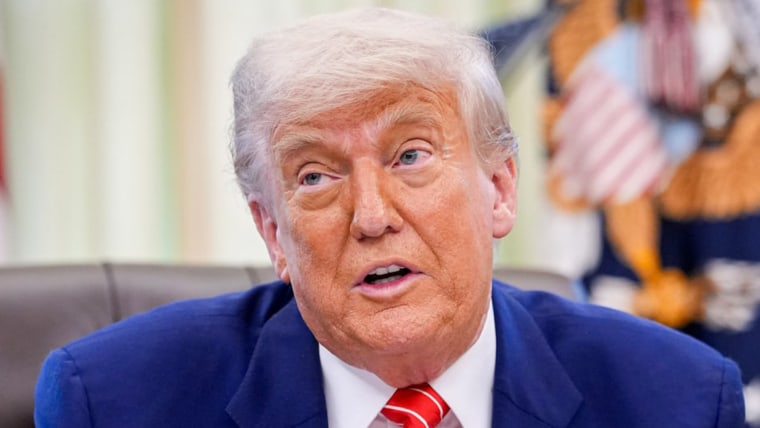This is an adapted excerpt from the July 7 episode of "The 11th Hour with Stephanie Ruhle."
President Donald Trump is, once again, ramping up his trade war. On Monday, he sent letters threatening new, higher tariff rates of between 25% to 40% on imports from 14 countries, including key U.S. allies Japan and South Korea.
Trump’s news led all three major stock indexes to close down on Monday. However, considering that the president has yet to enforce any trade deadlines, it’s interesting that this triggered a big sell-off at all.
In fact, on Tuesday morning, several investment banks published notes for investors basically questioning the president’s follow-through. From UBS: “It seems a wasted effort to analyze every Trump social media post when investors understandably anticipate future retreats.” Over at Goldman Sachs, “We do not generally expect these proposed rates to take effect on Aug. 1.” The folks at ING summed it up succinctly, “The tariff rollercoaster ride continues.”
What have we heard from the White House as this 90-day period comes to a close? A whole lot of contradictions.
The president’s announcement came just before his original July 9 deadline. On Monday, Trump signed an executive order giving countries until Aug. 1 to lock in trade agreements with the United States or see these latest rates take effect.
According to Treasury Secretary Scott Bessent, Trump’s executive order is already working. “When he said that there’s a chance that countries could boomerang back to their April 2 reciprocal tariff levels, we’ve had a lot of people change their tune in terms of negotiations,” Bessent told CNBC on Monday. “My mailbox was full last night with a lot of new offers, a lot of new proposals. So, it’s going to be a busy couple of days.”
Despite stating that the administration has a lot of new offers and proposals, Bessent gave no details about who those offers and proposals are from.
But let’s go back to the administration’s promise on tariffs back in April. White House trade adviser Peter Navarro told Fox Business the administration would “run 90 deals in 90 days.” It’s a catchy sound bite and easily amplifiable tagline but, what have we gotten so far? Just three so-called trade deals — more like frameworks or “concepts” of deals — that have failed to enhance trade relations and trade deficits.
So, what have we heard from the White House as this 90-day period comes to a close? A whole lot of contradictions.
On Sunday, the president and one of his Cabinet members in charge of trade negotiations gave conflicting statements. According to Trump, “deals” with most countries will be done by this Wednesday. However, Commerce Secretary Howard Lutnick said reciprocal tariffs will go into effect on Aug. 1.
On the very same day, it was shocking to hear Bessent, the other guy running trade negotiations, tell CNN that during this 90-day period, “many” countries were not even in contact with the United States about trade deals.
Just think about that: We are the world’s superpower, and despite Trump's constant threats, many countries didn’t even contact us about a possible deal. Take a minute to consider the process for how this whole operation is being led, executed and communicated, and then you may start to understand how 100-plus countries might not have any idea what to say to the United States.

